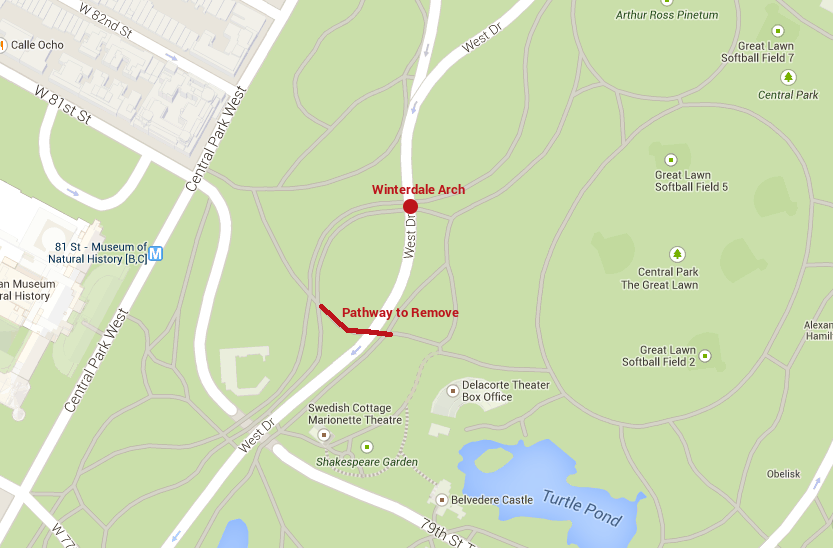Matthew Falber led walking tours of Central Park for years before the idea struck. After a spate of tragic pedestrian deaths in the park in 2014, a mayoral official posited that Frederick Law Olmsted and Calvert Vaux’s 19th-century design of the park could be to blame. That’s when Falber decided to channel his knowledge into activism. “It sort of hit me that there was a solution to the problem that was in the original park plan,” he says. That solution? Arches. Calvert and Vaux included many in their 1857 plan to separate—and thereby protect—all its users: carriages; horseback riders; and those on foot.
Falber sent out a short proposal to government and park officials and then formalized his idea into the Central Park Arch Project, produced an explanatory video, and is starting to spread the word. This weekend, he’s leading a (free!) six-hour Jane’s Walk tour to talk about his group’s mission. Among the main aims are to restore arches, some of which were removed or damaged over a century and a half, to rebuild some arches in other, problematic areas in order to disperse park traffic, and to revise a few collision-prone pedestrian pathways—all in the name of saving lives.
One of Falber’s primary tenets is that Olmsted and Vaux painstakingly incorporated arches into their design more than 150 years ago in a way that’s not too foreign from today’s needs; according to drafted research from the Central Park Arch Project, they “used arches not only as a safety measure (to separate what was at that time the bridle path from pedestrian crossings), but as an aesthetic tool to create a cohesive green space: keeping pedestrians immersed in the park’s surroundings while cleverly hiding bustling roadways on another plane.”
From our partners:
An example of a now-destroyed arch that could be resurrected is Marble Arch, which used to connect the southern part of the Mall with the area around Wollman Rink. It was demolished during Robert Moses’s pro-car tenure, but some remnants may exist underground. According to the Central Park Arch Project, which supports rebuilding it:
[infobox]In Marble Arch’s place, you’ll find a level crossing where pedestrians, carriages, vehicles, and bicycles regularly cross without regard for the traffic light that crudely replaced the arch. According to a recent study by the NYC Department of Transportation, this is one of the most common areas in the park for collisions to occur.
[/infobox]The Gothic Revival-style Oval Arch, once located near 61st Street and Central Park West, is another specimen eyed for reconstruction.
Moses also led the charge to demolish this one when building the Heckscher Ballfields. The Central Park Arch Project believes that rebuilding it near an existing crosswalk in the park that sees many collisions would help.
Falber also believes in re-routing pedestrians away from crosswalks where many collisions with bikes and cars occur—and towards existing, reconstructed, or newly built arches. One specific location: the Winterdale Arch that is in the park at West 81st Street and connects to the Great Lawn. Directing visitors under the arch to reach the Great Lawn, Turtle Pond, and the Delacorte Theater, rather than having them cross the busy loop, might prevent further damage like the kind that inspired his whole project.
“What we would like to do is revise pathways or make signage so that they don’t have to walk out into traffic,” Falber says. “Olmsted and Vaux had this idea that what they were doing was bringing nature to the city, which was needed at the time, and still needed today.”
This feature originally appeared in Curbed.





















